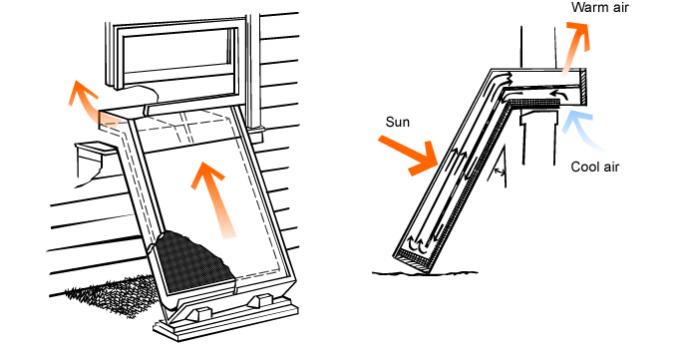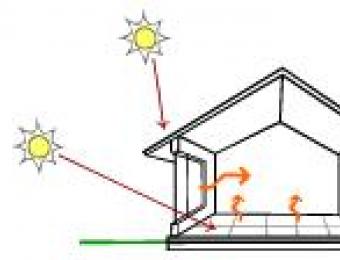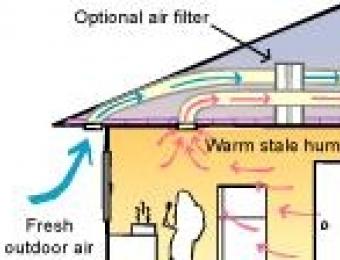
Passive solar air convection heaters are a relatively new type of heater, and as such there aren't many manufacturers - in fact, many are home made. These types of heater are designed to either sit in the window or on a roof, from where they draw cool air out of a room, heat it using the sun, and then transfer it back into the room.
Solar heaters that rely directly on heat from the sun rather than on electricity created using photovoltaic panels aren't widely used, simply because the results are rarely good enough for particularly cold climates.
How do solar air convection heaters work?
Solar air convection heaters normally consist of a collector panel, encased in a box with a well insulated transparent panel on top (normally made of glass). Sunlight enters the box and heats the collector panel. Because of the way it's designed, the heater sucks cool air out of the room into the lower part of the heater. The air then travels around from the bottom and up through the heater where it gathers heat, and is then returned to the room. The principle is similar to that used in a Trombe wall, although most commercial setups use a fan to increase flow and efficiency.
Variations exist on this theme, including systems that are designed using rocks as thermal mass to create a thermosiphon-type effect, which work in a similar fashion to solar hot water thermosiphon systems.
While they're not often used as a complete heating system, solar heaters can be used very effectively to supplement heating, and in some cases can practically eliminate regular heating costs. These systems can be used effectively with heat recovery ventilators, and can also be used to draw cool air into the home after hot days during summer.
How energy efficient are solar air convection heaters?
Of course, sunlight is free so these types of systems will technically never run out of fuel, however their effectiveness is very much dependent on direct exposure to sunlight and how tightly they're installed and insulated. On cold, overcast days, solar air convection heaters are likely to be less effective, and unless they're designed to gather and store a considerable amount of heat into some form of thermal mass, they normally don't provide any heating at all when the sun goes down.
In most cases the only energy they draw is used to power a small fan - and that itself can be powered by solar cells too.
|
Advantages
|
Disadvantages
|


